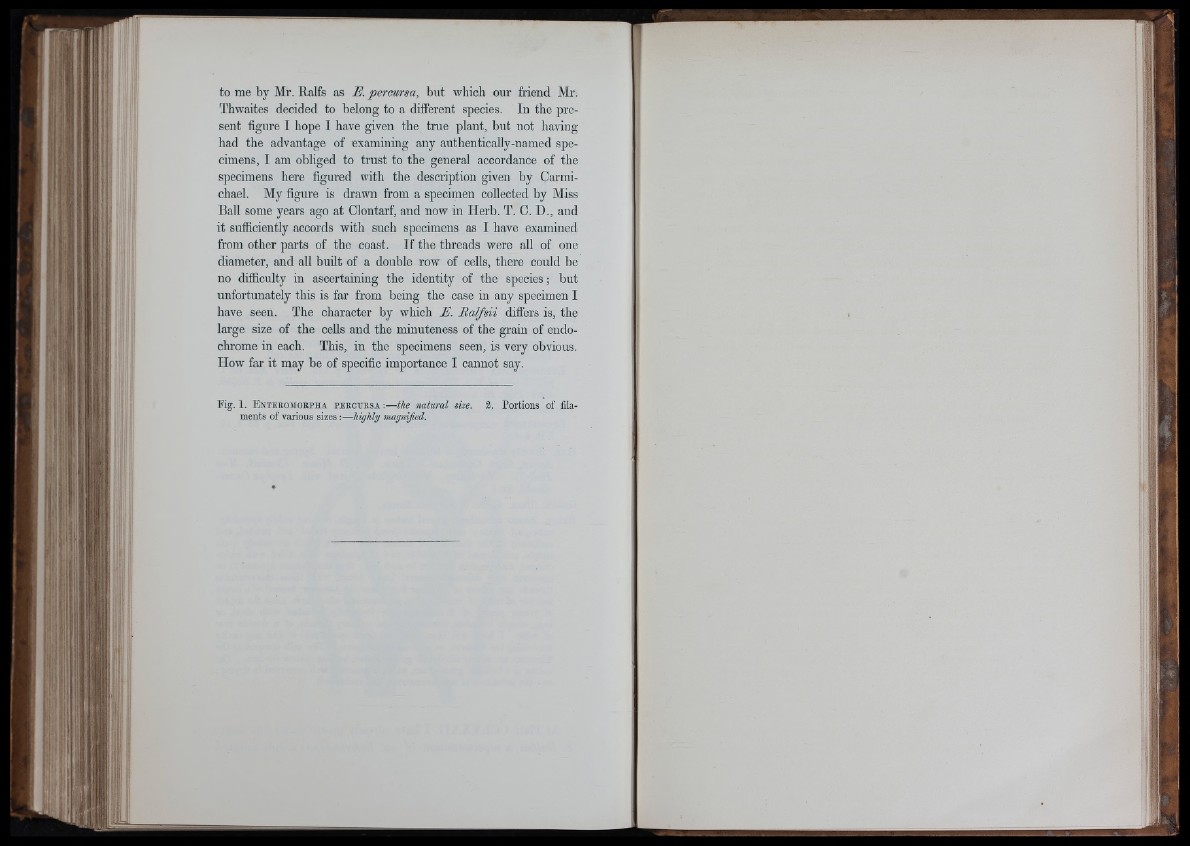
me by Mr. Ralfs as E. percursa, but whicli our friend Mr.
Thwaites decided to belong to a different species. In the present
figure I hope I have given the true plant, but not having
had the advantage of examining any authentically-named specimens,
I am obliged to trust to the general accordance of the
specimens here figured with the description given by Carmichael.
My figure is drawn from a specimen collected by Miss
Ball some years ago at Clontarf, and now in Herb. T. C. H., and
it sufficiently accords with such specimens as I have examined
from other parts of the coast. If the threads were all of one
diameter, and all built of a double row of cells, there could be
no difficulty in ascertaining the identity of the species; but
unfortunately this is far from being the case in any specimen I
have seen. The character by which E. Balfsii differs is, the
large size of the cells and the minuteness of the grain of endo-
cln-ome in each. This, in the specimens seen, is very obvious.
How far it may be of specific importance I cannot say.
Mg. 1. E nteeojiokph.1 PEECUESA :
ments of various sizes:—.
3. Portions of fila